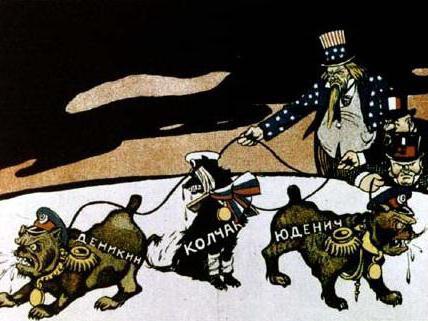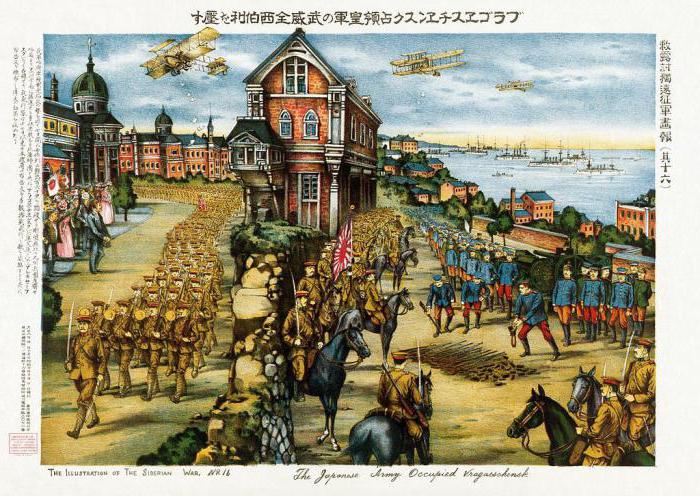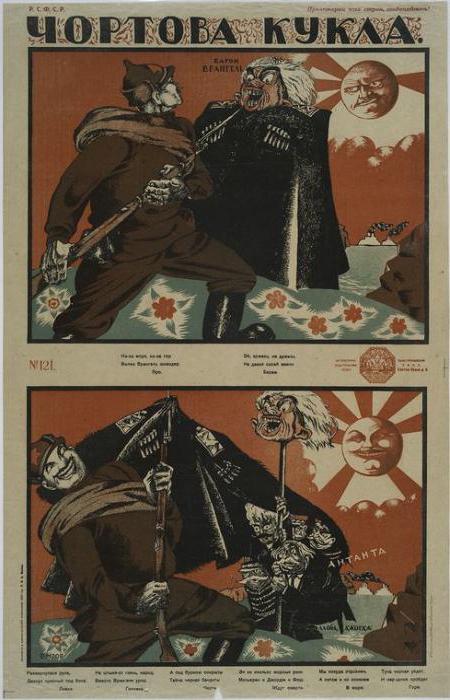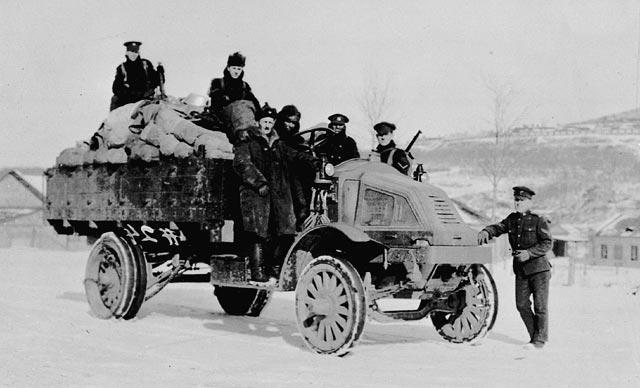The military intervention in Russia for the peoples of the former empire became a great grief and test. In the fire of those long-gone events, millions of lives of ordinary people were burned, including, in addition to the armed forces, civilians: men, women and children. The horrors of those years can not be expressed in words, it seems that the devil himself moved into the opposing forces.

Causes of the Civil War
In order to answer the question of what the intervention and the Civil War are, it is necessary to study the history of the Russian state, starting with the February Revolution of 1917. It was then, according to the assumptions of many historians, that the confrontation of the so-called red and white army began. And the simultaneous process of foreign intervention, in other words, occupation.
After the approval of the power of the Soviets, the nobility was deprived of their lands, industrial enterprises were also nationalized. In addition, a decree on "Red Terror" was adopted, which clearly spoke about the power struggle against all those who disagree with the policy of the Bolsheviks. Deposed classes wanted to maintain their privileges. The civil war in Russia has a peculiarity, it is intertwined with foreign intervention.

Years 1917-1918
During the dual power in Russia, two main forces were formed: the interim government and the Soviets. During the October Revolution, the treacherous overthrow of the interim government took place and all power was concentrated in the hands of the Bolsheviks. This moment is considered the beginning of the Civil War.
After the first actions of the Soviets, the foreign allies of the already fallen Russian Empire were obliged to save the dying monarchy. Therefore, the member countries of the Entente military bloc began their invasion, the purpose of which was to overthrow the dictatorship of the proletariat and return the old system of government. This war was civil. Intervention has become an integral part of it.

In 1918, the White Movement appeared. Led by such figures of the army and navy of the former Russian Empire as Denikin, Kornilov, Kolchak, Annenkov, Alekseev, Krasnov and other Soviet government, a humiliating Brest peace was signed at that time. However, Russia's allies in the Entente did not recognize him and prepared for intervention.
The forces of England, France and the USA, Japan began to arrive on the territory of Soviet Russia through the sea: Murmansk, Arkhangelsk, the Far East. In general, a powerful anti-Bolshevik movement is forming in the country. The Soviets understand this and realize that living members of the ousted Romanov dynasty can be a threat. July 16, 1918 in Yekaterinburg, the execution of the entire royal family. At the same time, the Soviets began to create a regular Red Army, which at first consisted of 300 thousand people, and by the time the Civil War and intervention were coming to an end, there were already more than 5 million people. No army today has such a strength.

Peak of war and foreign intervention
The White Movement reached its greatest scope in 1919. What is the intervention, the Russian lands learned at this time. The powerful support of the white officers of the troops of the former allies of the Entente developed. As a result, the Russian government headed by Kolchak was proclaimed in Siberia, Denikin stood out in the South, Miller in the North, and General Yudenich in the Baltic. England itself captured Baku, as well as Novorossiysk and Batumi, the French captured the Crimea.But just in this seemingly hopeless period, when the whole territory of Soviet Russia began to be occupied by invaders, as well as white officers, the Bolsheviks launched a powerful offensive on all fronts. Slowly but surely, the Soviets triumph after victory; the revolutionary situation in Europe itself played into their hands. In the countries of the Old World, slogans sounded more and more often: "Hands off Soviet Russia!" This has become one of the main reasons for the withdrawal of intervention troops.

Final stage
By 1920, they began to talk about the White Movement, and with it about what intervention was, in the past tense. Soviet power is being established throughout Russia. Wrangel is making great strides; he is called the ruler of the South of Russia. The Soviets send an army under the leadership of Frunze to fight him. For a short time he managed to break Wrangel. Many historians consider this moment to be the end of the Civil War. Separate foci existed before 1922, but they did not pose a serious threat to Soviet power.

Results and historical significance
Having learned what intervention and civil war were, Russian society wanted only one thing - the completion of these terrible events. The White movement did not draw up a clear program, their actions were not coordinated, in addition, the broad sections of the population sided with the Bolsheviks, who promised equality and exclusion of the nobility class. This was the reason for the victory of the Soviets.

The civil war, the intervention of the allied states of the former Russian Empire, will persist for all time in the history of the Russian people. The scale of the tragedy is simply amazing. For comparison: a total of 10 million people died during the First World War, and 13 million lives during the Civil War. They inflicted tremendous damage on economic relations throughout Russia. The economic situation was in a terrible situation. The consequence of this was hunger, an epidemic of disease. The events of 1917-1922 created devastation in the country from which the new state was born, which was destined to become a superpower. Its name is the USSR.